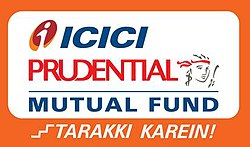Credit Risk Debt Fund

1Y
3Y
SI
Nav
Risk

1Y
3Y
5Y
SI
Nav
Risk

1Y
3Y
5Y
SI
Nav
Risk

1Y
3Y
5Y
SI
Nav
Risk

1Y
3Y
SI
Nav
Risk

1Y
3Y
SI
Nav
Risk

1Y
3Y
SI
Nav
Risk

1Y
3Y
5Y
SI
Nav
Risk

1Y
3Y
5Y
SI
Nav
Risk

1Y
3Y
5Y
SI
Nav
Risk
Credit Risk Debt Funds are a category of mutual funds that invest in debt securities, primarily focusing on lower-rated corporate bonds to earn higher returns. According to SEBI regulations, at least 65% of the fund's total assets must be allocated to securities rated below the highest credit rating (i.e., below AAA).
These funds aim to generate attractive yields by taking on credit risk — the risk that the bond issuer might default on payment obligations. While the potential returns are higher than traditional debt funds, they also carry an increased risk of default or credit rating downgrades.
Credit Risk Funds are actively managed, with fund managers closely monitoring the creditworthiness of issuers. They frequently adjust the portfolio to optimize the risk-reward balance based on market developments and issuer performance.
Who Should Consider This Fund
Credit Risk Debt Funds are ideal for investors with a reasonably high risk appetite who seek to earn higher returns than conventional debt instruments like fixed deposits or short-term funds.
These funds are best suited for individuals who:
- Can remain invested for a medium- to long-term horizon (3 to 5 years)
- Are comfortable with short-term volatility due to credit events or economic fluctuations
- Want to diversify their fixed-income portfolio
- Are seeking higher post-tax returns, especially when held long-term
However, investors must be willing to accept the credit risk inherent in lower-rated instruments. These funds prioritize yield over safety, making them more volatile but potentially more rewarding for infor
Risks and Return Potential
Credit risk is the primary concern in a Credit Risk Debt Fund. It refers to scenarios where companies in the fund’s portfolio face financial difficulties or are downgraded by credit rating agencies. Such events can lead to a sudden decline in the fund’s Net Asset Value (NAV). This volatility is typically higher compared to Banking & PSU or Liquid Funds.
However, these risks are balanced by the potential for higher returns. Investors can expect typical annualized returns in the range of 7% to 9%, though these depend heavily on prevailing market conditions and the fund manager’s ability to select quality issuers. These funds tend to perform better during stable or improving credit cycles, where the financial health of the issuing firms is strengthening and the risk of default is reduced.
From a taxation perspective, Credit Risk Funds follow the same rules as other debt mutual funds. Short-term capital gains (STCG)—from units held for less than three years—are taxed as per the investor’s income tax slab. Long-term capital gains (LTCG), on the other hand, benefit from indexation if the units are held for more than three years, making them more tax-efficient over the long term.
Benefits of Credit Risk Debt Funds
The primary advantage of Credit Risk Funds lies in their potential to deliver higher returns by strategically selecting debt instruments from issuers with lower credit ratings but strong fundamentals. Skilled fund managers actively look for opportunities in “rising-star” companies businesses with improving financials that have not yet reached a AAA credit rating. When these companies are upgraded by credit agencies, their bond prices rise, contributing to the fund’s overall capital appreciation.
Since these funds are professionally managed, investors gain access to a diversified portfolioof credit instruments assets they might not have the means or expertise to invest in directly. For those aiming to enhance income generation from their debt h
Things to Keep in Mind Before Investing
Because of their exposure to lower-rated securities, Credit Risk Funds carry a high level of risk. Investors should thoroughly assess the credit quality of the portfolio, analyze the fund’s performance during past credit events, and review the risk management framework of the fund house before investing.
It is important to understand that returns are not guaranteed and can vary significantly due to sudden downgrades or defaults. Therefore, a longer investment horizon typically 3 to 5 years or more is advised to ride out short-term volatility.
Credit Risk Funds should not form the core of an investor’s portfolio. Instead, they are best used as a satellite allocation within a broadly diversified investment strategy, especially for those seeking enhanced yield while being aware of the inherent risks.
Get In Touch
Interested in exploring more about JezzMoney Mutual Fund Distributors Software? Submit the form, and we will respond quickly.
Get Expert Advice on Investment in Mutual Funds!
- Certified mutual fund distributors around India will reach out to help you build your future.
- Connect with trusted mutual fund distributors and find them from your city and pincode area.
- JezzMoney is only the mediator to help you connect with these certified professionals.
- It is your obligation to gather accurate information when you receive contact from our platform.